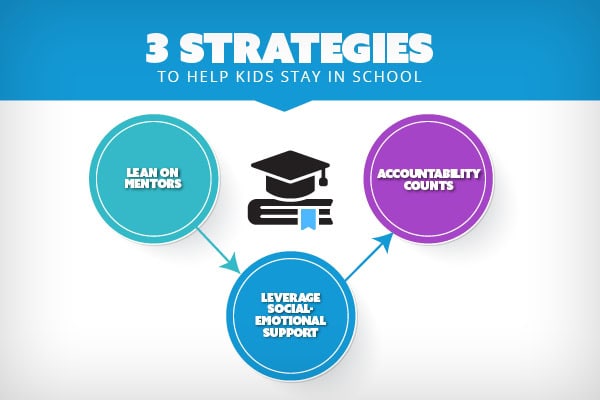Schools, particularly in New York City, are battling chronic absenteeism through emotional support, financial aid, free health checks and access to food pantries, writes Phoebe Boyer, president and CEO of Children’s Aid in The 74.
With students missing class at alarming rates, acknowledging that chronic absenteeism is now an educational emergency is long overdue, she says. A hidden educational crisis before the pandemic, COVID accelerated chronic school absences. In 2022, nearly 16 million students were defined as chronically absent, meaning they missed more than 10% of school days — nearly four weeks of class. That’s double the rate of pre-pandemic absences.
What kinds of interventions work to get students in the classroom?
Here are three solutions:
1) Lean on mentors
Students face significant personal barriers outside the classroom that impact their attendance, and educators don’t have the time or opportunities to connect with them individually. Several community schools in New York piloted a success mentor program that pairs students with adult staffers, including teachers, coaches, custodians, security guards and administrative professionals. Mentors create a positive environment to foster consistent attendance and improve academic performance.
2) Leverage social-emotional support
Children of asylum seekers face one of the steepest absenteeism and mental health challenges in New York City. One community school tapped a social worker to lead a support group to work on social-emotional wellness as a community — and provide students with individualized attention. A support group can increase participation in school activities ranging from a soccer club, fun events such as Waffle Friday, and by conducting health and vision screening.
3) Accountability counts
During the pandemic several community schools prioritized assessing data on individual students’ attendance, behavior and coursework to identify new solutions. They looked at the numbers and decided to focus on peer accountability. If students are waiting for one another to go to school, and expect their classmates to be there, there is a higher chance of attendance. Next, community school leaders launched a virtual school bus program. Success mentors map out a walking route and pick students up along the way to school, providing an extra layer of group support and accountability. This tactic has been effective in improving attendance.
Educators must find innovative ways to deliver them to the, says Boyer. Work with community partners to assess individual student and family needs and confront obstacles to regular attendance. Virtual school buses, success mentors or confronting and supporting mental health — it’s time to advance solutions to the absenteeism crisis, says Boyer.
The 74





